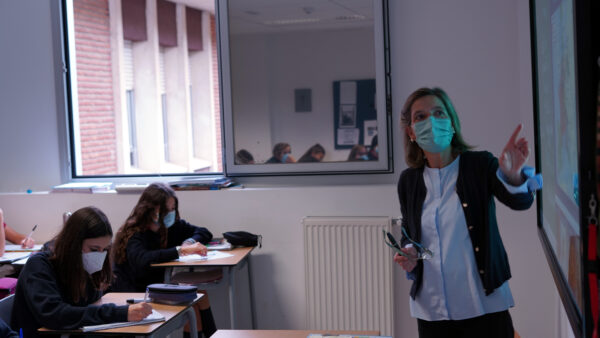
ESO class, with constant ventilation in the classroom
Teacher Interview
The teachers, for their part, are also optimistic and have been open to answering our questions. There is a calm atmosphere in the school, and the teachers are happy and confident. It is essential for the development of the day to day in an educational center that management and teachers go hand in hand and believe in the project of the center, more when there have been so many developments and situations to which all have had to adapt. So, how do teachers live it? One of the school’s language teachers tells us below.
How have the teachers organized themselves in this reopening?
First of all, we had to consider how to welcome the students: to be interested in them, their families and to know their realities.
The next thing was to consider the security of the whole school: students, teachers and non-teaching staff.
We accepted the indications of direction and if something was clear it is that this course, more than ever, we had to be very flexible: the circumstances, safety rules, living conditions and so on could change from one day to another.
Taking this into account, we prepared ourselves to face different conditions of attendance: how would our face-to-face classes be? What if a student was confined? Or the teacher? Or the class? Or the school? Although from the first moment we had the instructions for each case, we had to adapt it to our subjects and our courses (it is not the same to do English than to do Maths, or to be in 1st of ESO than 4th).

We accepted the direction indications and if something was clear it is that this course, more than ever, we had to be very flexible.
Academically, it was clear to us that we had to spend some time reviewing the contents worked on during the confinement time, in order to later incorporate the new learning. When programming it was very important to have very clear what contents were going to be a priority in order to be able to elaborate a flexible programming, that we could adapt week by week to the circumstances that we were meeting.
As for the material, many of us have chosen to combine digital and traditional resources in our classes, this has been perhaps the easiest choice. The most complicated part was adapting our methodology: how to combine cooperative work and social distance? It seemed complex, but it could be possible by distributing the tables in different ways.
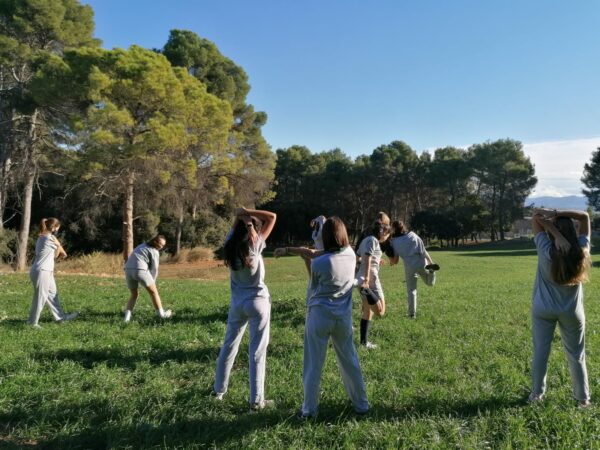
Choosing to leave the school grounds is also an option. In this case, students from the ESO carry out Physical Education outside the school.
How have teachers and students adapted to the new measures?
We are clear that the 3 most important safety elements are: hands, distance and mask. We have quickly adapted to taking morning temperatures and washing hands, plus the frequent use of hydroalcoholic gel.
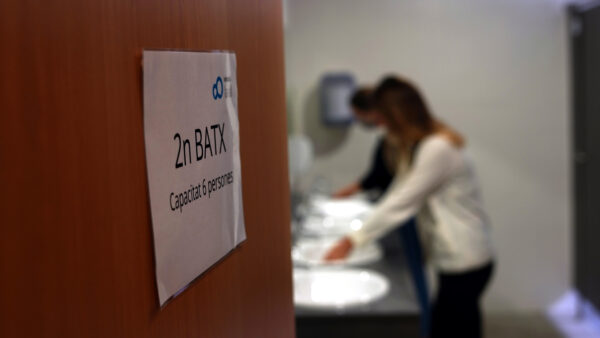
Constant hand washing, in this case in Bachillerato, where the toilets have capacity for 6 people.
The distance, in the classroom, we can control quite well, although it is difficult to avoid contact between them when they go to the yard or go home. Adapting to the mask is costing more. Although we have been using it since the summer, we realize that in class it is a barrier. On the one hand, we need to project our voice more to make sure we can be heard, some teachers have resorted to microphones; on the other hand, we lose facial expressions when we cover our mouths, which takes away at least 50% of our expressiveness. It is also more difficult to understand the students! Especially for those of us who, like me, are dedicated to teaching languages.
As far as methodology is concerned, we have started cautiously, reviewing contents with individual work and little by little we have been recovering the work in pairs and in small groups placing the classroom furniture in different ways to be able to keep as much distance as possible, avoiding sharing material, etc. What if a student is confined? He can participate equally from home, he is one more in the group.
I suppose that these changes are efficient: we are all getting used to them and the truth is that it seems that, although there have been positive cases at the school, it seems that there have been no infections within the center, so the security measures have to be working.
How are emotions and emotional learning activities addressed during this reopening period?
As I mentioned before, the reception of the students during the first days was very important, although in most cases we had maintained telephone or virtual contact, the presence brings a more direct, more intense communication.
Not all students have experienced confinement in the same way and now the new normality is not being experienced in the same way: while some do not give it any importance, others live it with anguish and fear.
We have to make some people aware and accompany others, as well as transmitting calm and security to others.
For this we need to do individualized follow-ups, talk to each one, empathize. In the end this is what we always do, but now with more intensity, more frequency and more personalized.
The reception of the students in the first days was very important, although in most cases we had maintained telephone or virtual contact, the presence brings a more direct, more intense communication.
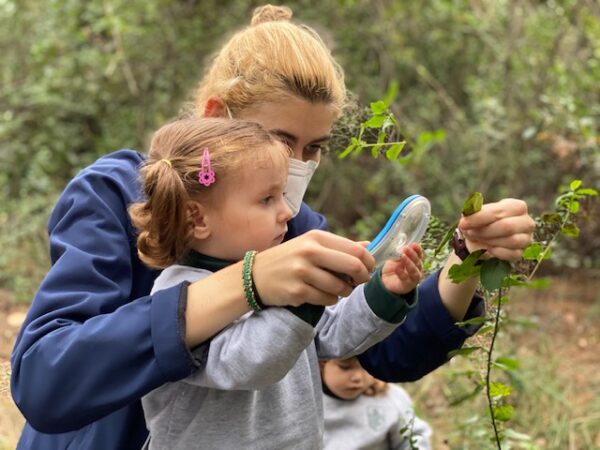
How is the overall experience being? Despite this moment of crisis, what would you say are the positive points?
It’s an intense experience, after a week of the course it seemed like we had been working for a month already! But the balance, for the moment, is positive.
This crisis is forcing us to rethink how we teach, what is important, what is worthwhile. Emotional accompaniment is gaining importance (and not only on paper), respect for others and generosity (the security measures we take protect others even more than ourselves), the value of friendship and family.
Academically, we rethink what is important: the quality of learning and not the quantity. We are gaining flexibility, empathy, patience, creativity, generosity…
We are discovering that we have skills that we did not imagine: for example, who would have thought that we could be simultaneously in a classroom and in a student’s home?
Emotional accompaniment gains importance (and not just on paper), respect for others and generosity (the safety measures we take protect others even more than you do yourself), the value of friendship and family.
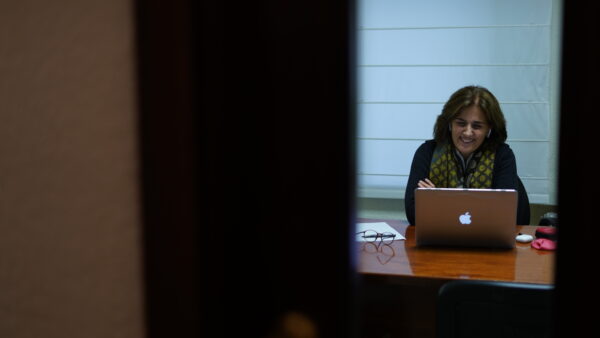
Tutorials with families in offices have become online meetings.
Student Interview
The students’ vision is also a key part of this process. How do they live it? Do they feel safe? Do they breathe the calm that the teachers have? We have been fortunate to have a high school student who has been able to answer the following questions with great joy.
How do you feel about this return to school? What changes have you noticed in this reopening?
I feel excited to return to school and see my classmates and teachers in person, although with a lot of uncertainty since no one knows when we will be confined to the classroom.
In this reopening I have noticed several changes, such as the distribution of the classes and the dining room and the presence of the hydroalcoholic gel in every corner of the school. And of course, the masks, the limited capacity in places like the washroom or the dining room …
Do you think the changes and adaptations improve everyone’s safety?
Yes, I believe that all changes and adaptations improve everyone’s safety in a very effective way and that, despite being many in the school, there have been few infections.
Are there any positive aspects to this reopening?
The positive points of this reopening are many: we learn faster and better in a face-to-face way, we interact more directly with the teachers than at home, the material offered by the school such as the digital boards help us to understand the material much better than with the material we have at home.
Although there are aspects we would like to avoid such as the use of the mask, which can be very annoying, it is worth returning to school.
Interview with Carmen Molins, doctor of the school
We have been able to count on the answers from a key player in this time of uncertainty. With a smile, the school doctor opens the doors of the infirmary and tells us how she is living these busy times.
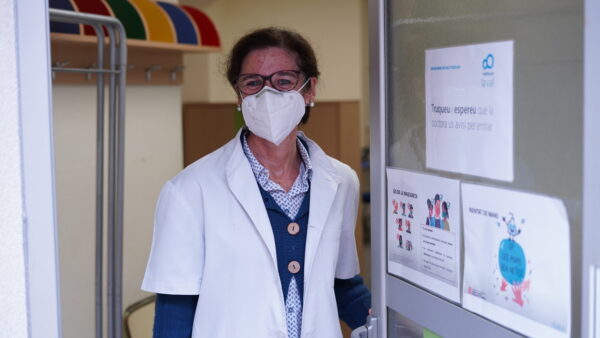
School doctor in the school nurse’s office
What is your role these days? Has it changed from the previous course?
My function is important at the moment. In addition to the welfare function of students and staff of the school, the action to emergencies and incidents that arise during school hours, control and monitoring of students with chronic diseases, coordination of the various health examinations and vaccinations, during this course, the addition is the prevention and management of Covid-19 cases in the school. Compared to the previous year, a lot has changed. The prevention measures, indicated by the Department of Education, have been taken. And it has been explained to families and students the rules of operation. In addition, due to the doubts and incidents that appear as a consequence of the pandemic, there is more contact with families.
What is the protocol to follow if a student is not feeling well?
Depending on what happens to her, one thing or another is done. If she has Covid symptoms, the student is first isolated in a reserved space with a surgical mask. We have isolation rooms where we would proceed, as the word indicates, to isolate the student in question if he or she presents any of the symptoms, in addition to calling the Covid manager. The family is also called in to pick the student up, and is advised to contact their primary care referral center. Subsequently, the student is followed up.
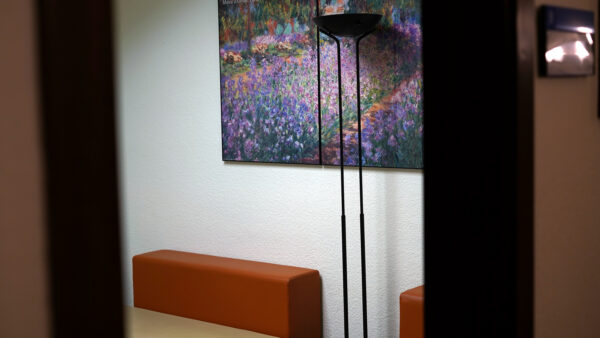
Isolation room of Bachillerat
Have you had many positive or possible positive cases?
Despite having very intense weeks, at the moment the cases we are having are external. But there have been several cases of positives and when this happens, we immediately contact our manager Covid and give him the data he needs from the student. The manager informs the Territorial Epidemiology Center to which the school belongs and throughout the day he sends us a written resolution of the case, which we pass on to the families of the stable group.
There are few possible positives. The families have signed the Declaration of Responsibility and are very involved. If before leaving home there are any symptoms, they no longer come to school.
Finally…
The opening plan of Institució La Vall shows that the school is a safe environment. Learning in the classrooms continues normally, and with measures for the inclusion of all the students; following the sanitary instructions and guaranteeing the attention to students and families.
You might also like

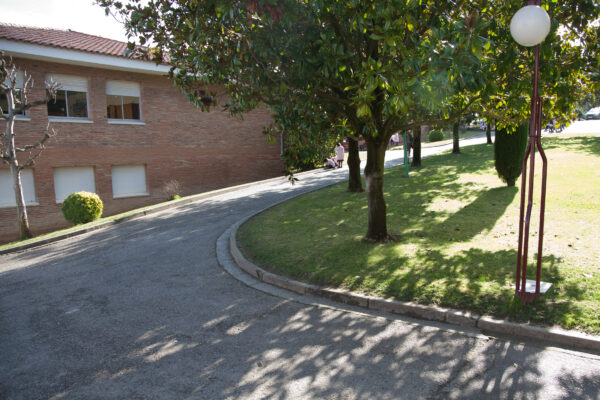
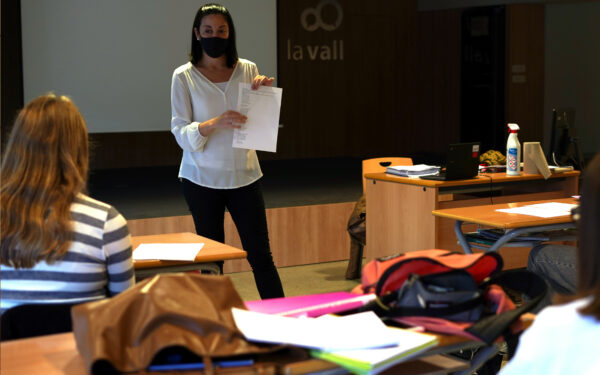
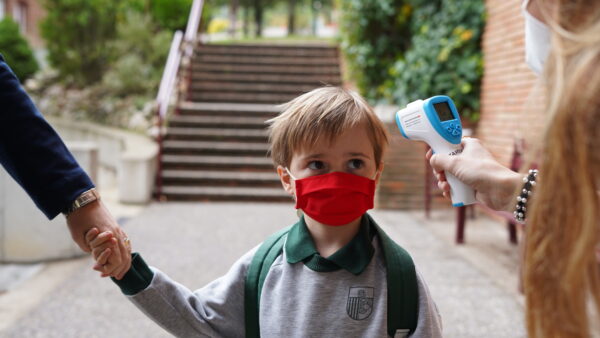
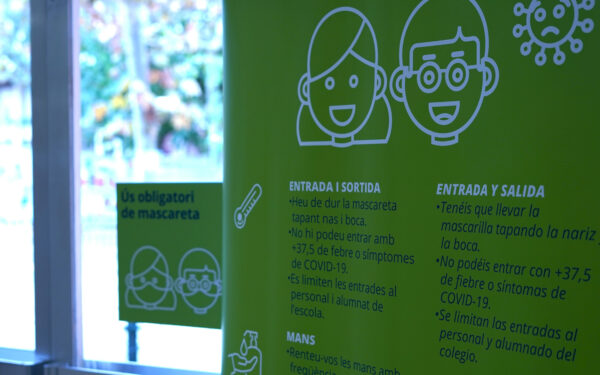
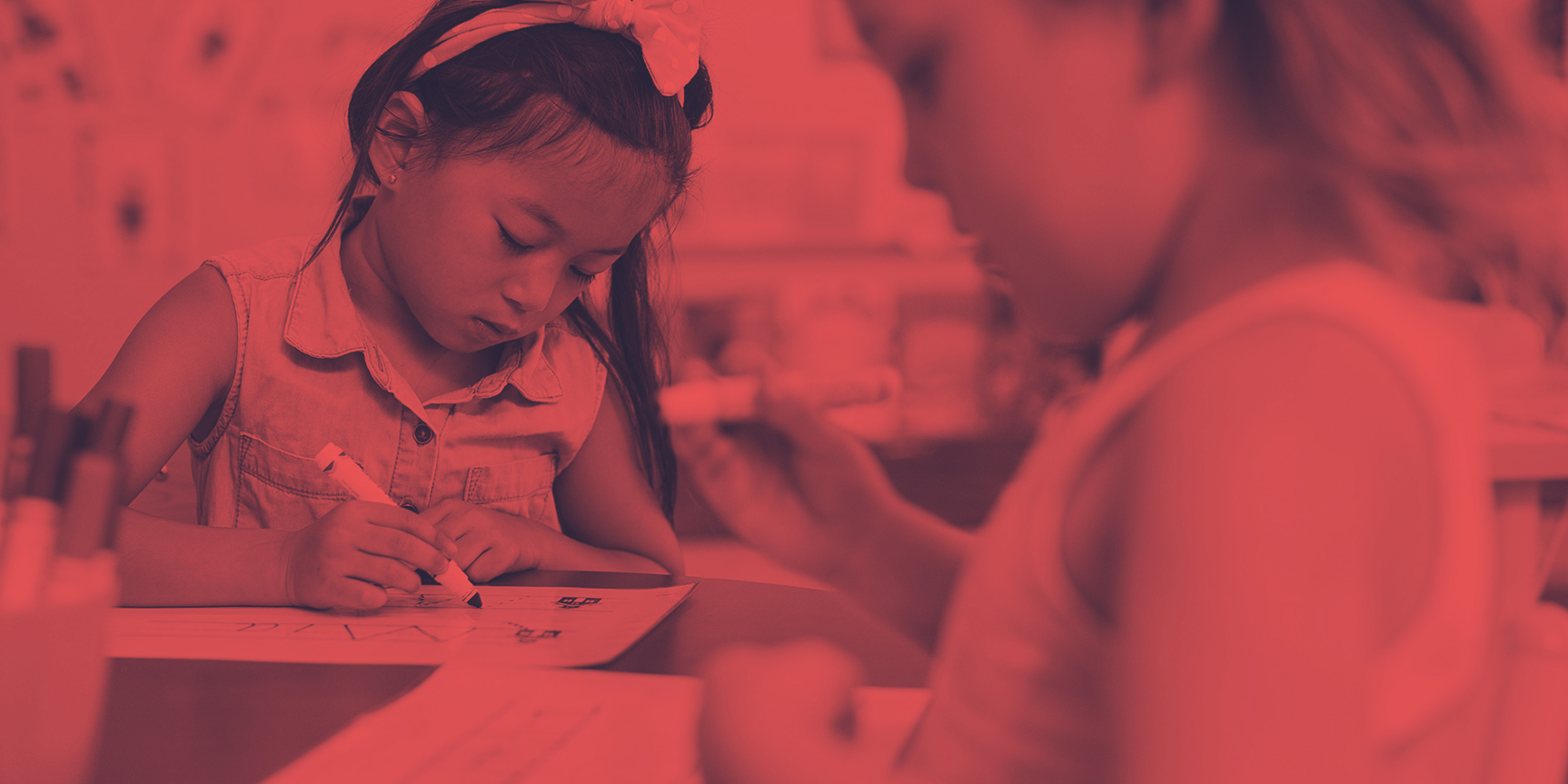
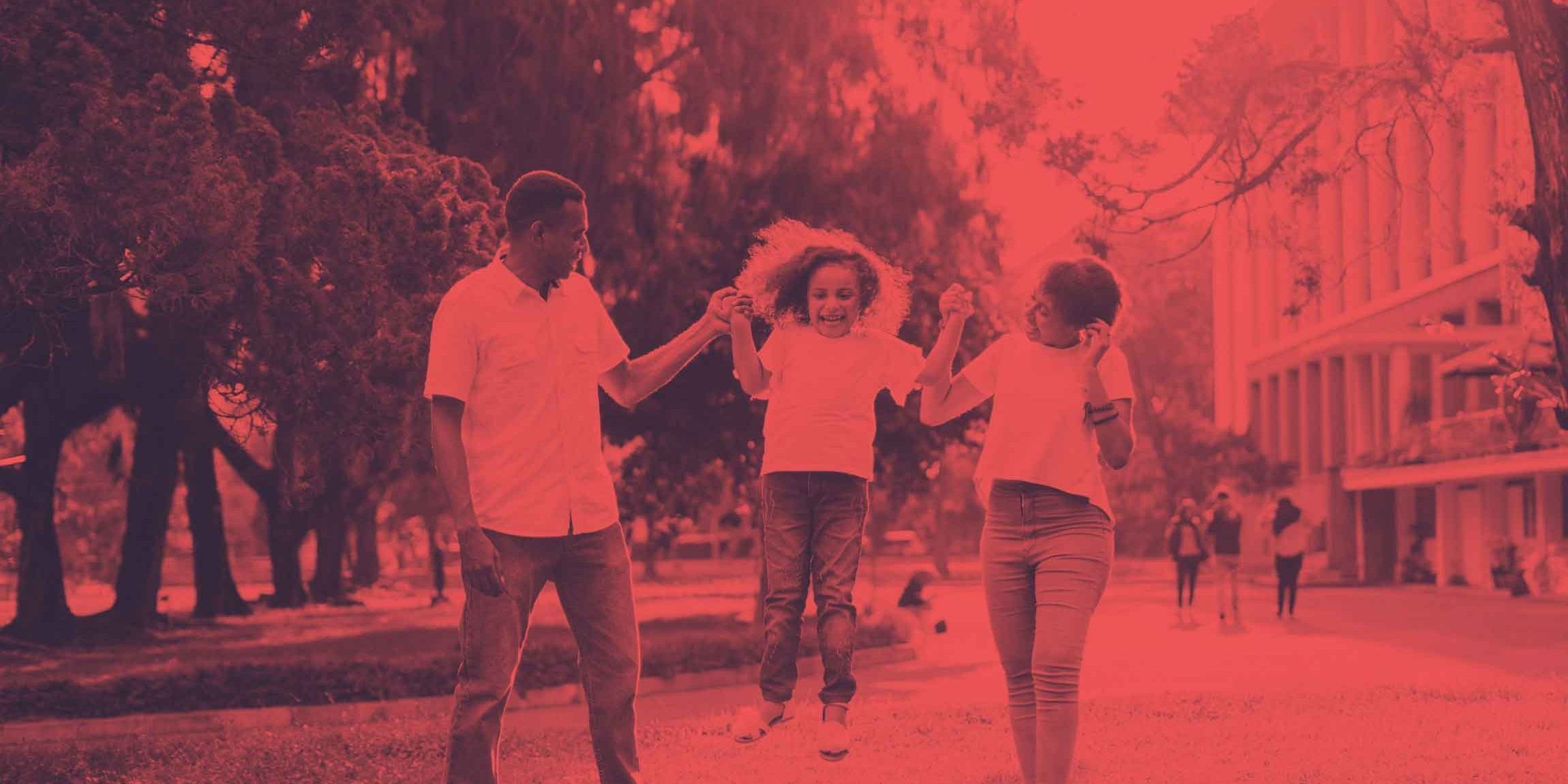

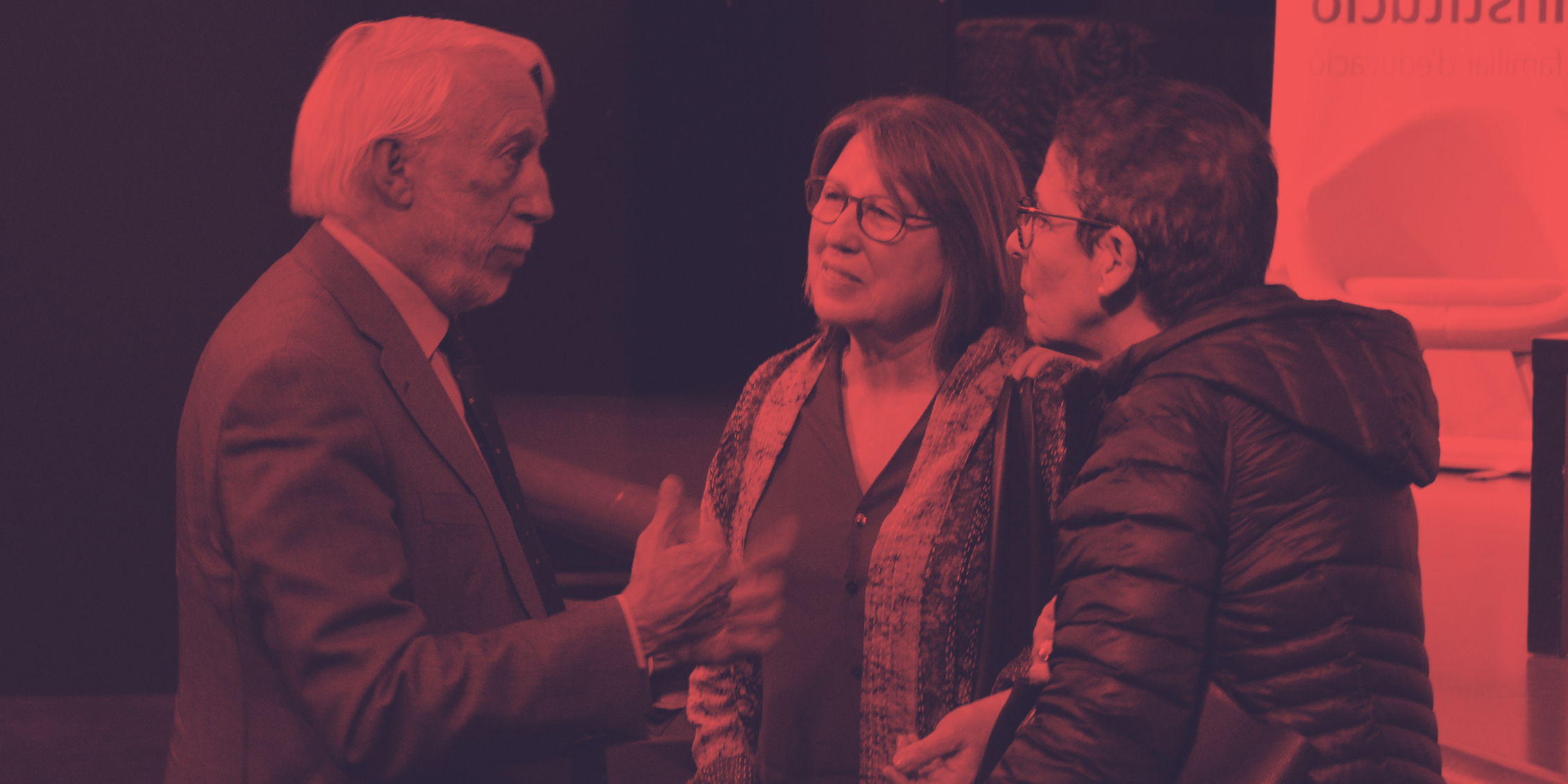
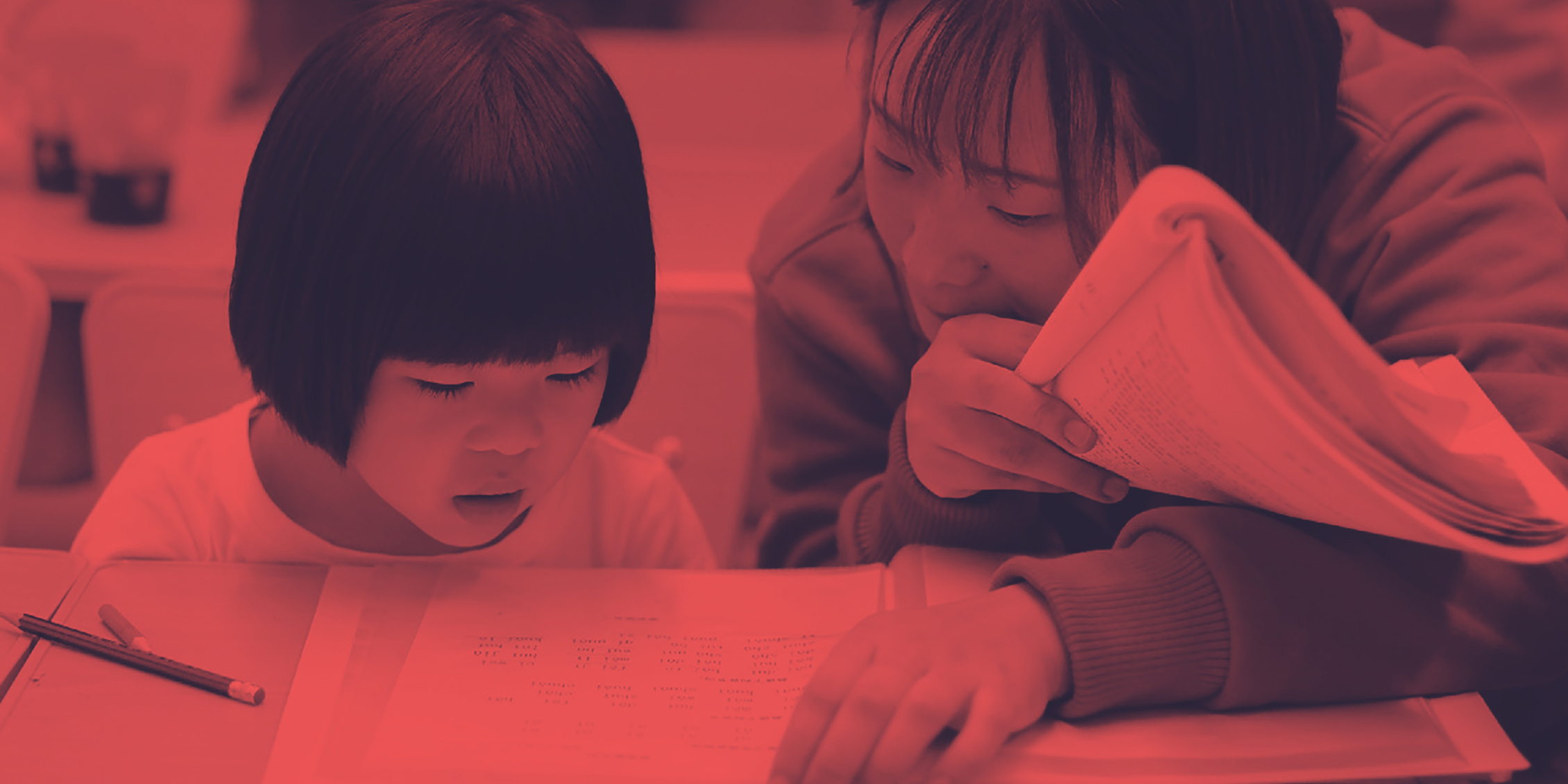
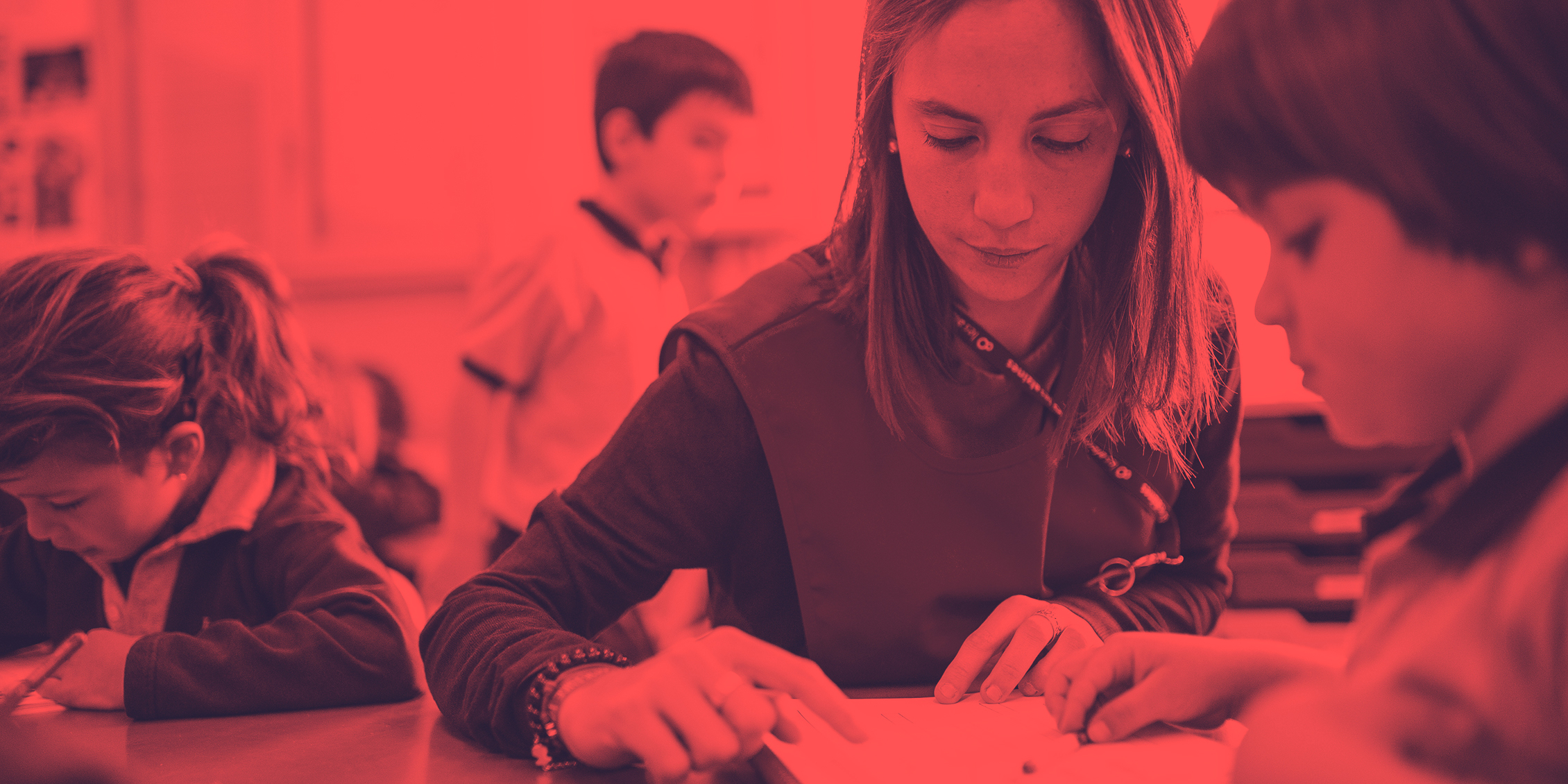


Leave A Comment